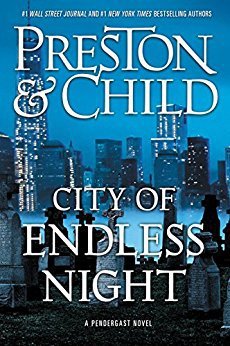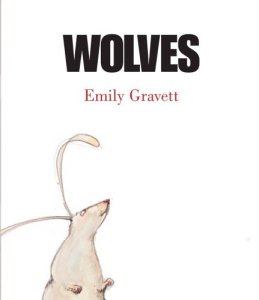
Don Leslie reads BLIND DESCENT by James M. Tabor, a fascinating true story about a team of adventurers who race to find the deepest place on Earth, in a cave in the Republic of Georgia. The expedition took weeks and cost hundreds of thousands of dollars, according to the author. Tabor is author of FOREVER ON THE MOUNTAIN, narrated by Scott Brick, and also FROZEN SOLID. Here’s my interview with him:
Tower Review) After being an Army brat and having so many unusual jobs, before and after grad school at Johns Hopkins, what brought you to writing about caving?
James M. Tabor) I had visited touristic caves, such as Luray Caverns, in Virginia as a very young child. My parents liked caves and my father grew up down there. Some about them grabbed me hard right off the bat. I’m still not sure how that capture happens, but I’ve heard many serious cavers say the same thing: first time they went into a cave, bam, they were hooked. After Hopkins, I ended up writing nonfiction features for a number of national magazines such as TIME, Smithsonian, Outside, and Readers Digest on a wide variety of subjects. When one gave me an assignment to profile an internationally famous caver, I jumped at it. Then a subsequent assignment took me on an extreme cave expedition. I did it actively for awhile but, to do anything like that at a high level is expensive, dangerous, and time consuming. Starting a second family eased me out of active caving. I never lost the fascination with caves, though, and ended up co-creating and executive-producing a History Channel Special about caving—the one you saw. During the production, I learned about Bill Stone and Alexander Klimchouk and their race to find the deepest cave, and that produced Blind Descent.
Q) There are quite a few touristy caves like Carlsbad, Mammoth, and Colossal. Kartchner Caverns in southern Arizona is oppressively paranoid about preservation, which makes visiting it an ordeal, like having a nanny hold your hand. What caving experience was most fun for you, and how accessible are the wild caves for teams like those you wrote about?
A) The most fun I had was accompanying a team into a wild cave in TAG–Tennessee, Alabama, and Georgia–called Run To The Mill. RTTM is now closed because of its hazards. It had all the challenges that make caving exciting: exhalation squeezes, chin-deep sumps, 250-foot vertical drops, and a tunnel, called a borehole because it was bored by an underground watercourse, a mile long, 65 feet wide, and 35 feet high. You could have driven two freight trains side by side down that borehole. The purpose of this particular penetration was to put a diver into a sump at the cave’s then-terminus, to extend the cave’s length. I was basically a Sherpa, hauling gear to support the dive. It was grueling work, but the cave was ample reward. Accessibility of wild caves varies, well, wildly. Many are on privately owned land, and access is entirely dependent on owners’ good will. A great challenge for all cavers is creating and maintaining positive relationships with landowners. Access to caves on public land–in national parks and forests–also varies, but at least the entry requirements are standardized, whereas every cave on private land presents a unique challenge.
Q) What most surprised you in research for this book?
A) Unquestionably the scale of supercave expeditions. As a climber, I was very familiar with the immense logistics of big Himalayan expeditions. But supercave expeditions dwarfed even those. I learned that they involved scores of people who remain on-site in base camps for months. They cost hundreds of thousands of dollars. And the most extreme teams can stay underground, working on dangerous, technical terrain, for three weeks and more.
Q) What is the most beautiful cave in the world, the deepest, and the most dangerous?
A) The deepest cave on earth is Krubera, located in Abkhazia in the Republic of Georgia. Roughly 7,200 feet. I didn’t do in-depth research on the great European supercaves in my book, but I think that, all things considered, Krubera would also qualify as the most dangerous. That’s a highly subjective judgment, of course, but here are some number. The cave is easily the deepest on earth, and 90% of its terrain is vertical. Air temperature in summer varies from 35-40F. Water temperature is just above freezing, around 32F so that frigid water, plus the air that’s always moving through caves, makes lethal hypothermia a constant threat. After a point, judging beauty of supercaves is like trying to figure out whether Sophia Loren or Elizabeth Taylor was more beautiful. Each one is fantastically beautiful in its own ways. So that’s the best sidestep I can do on that one!
Q) You produced a History channel special, which I just saw on video. What surprised me is hearing that drill bits melt at a certain depth due to heat. The frozen methane pocket that the Deepwater Horizon supposedly met…can oil drilling accidents really be prevented with current technology?
A) Honestly, I’m not an expert on oil drilling but I will say this. Several decades ago, an engineer named Charles Perrow wrote a book, which has since become a classic, called NORMAL ACCIDENTS: Living with High Risk Technologies. Its central thesis is that once any technology achieves a certain degree of complexity, accidents become not less likely but more so—inevitable, in fact. He supports that theory convincingly by examining in great detail Chernobyl and Three Mile Island, the Bhopal Chemical Plant accident, and the Challenger space shuttle explosion. The Deepwater Horizon debacle is only the most recent example. So I think the answer, from my perspective, is that accidents like that will never be entirely preventable. The question then becomes what level of frequency we are willing to accept and live with.
Q) Do you listen to audiobooks?
A) Constantly! Where I live in Vermont, it’s a good long drive to get anywhere. I love NPR, but one needs variety, and audiobooks save my sanity on long trips. I’ve just finished listening to Simon Winchester’s book on Krakatoa, The Day the World Exploded. Charles Frazier’s Civil War novel, Cold Mountain, is next in the player. I’ve listened to it once already, but Frazier’s writing is so miraculous that I’ll probably listen five or six times.
Q) What’s next for you?
A) I was originally trained as a fiction writer in the MFA program at Johns Hopkins. My first published short story won an O. Henry Award. I quickly learned that it was much easier to make a living writing nonfiction, however, so did that for along time, but that’s another story. Anyway, I decided to go back to fiction after Blind Descent. The Deep Zone was published in early 2012. You probably aren’t surprised to learn that a supercave figures prominently in the action. A follow-up novel featuring the same heroine, Hallie Leland, was called Frozen Solid. It takes place at the South Pole, an environment equally fascinating for its many extremities.
Share this:




